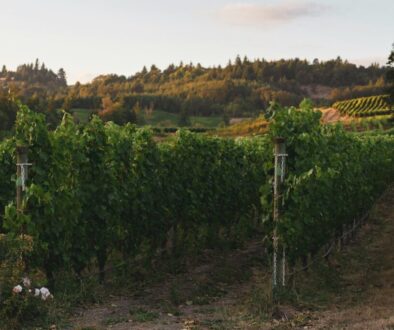The great rural food debate
What motivates us in our choice of foods and eating habits? Jessica Sellick investigates.
What motivates us in our choice of foods and eating habits? If we truly are what we eat, what’s new and changing on the menu? From the runaway weight gain train to community food initiatives – Jessica Sellick investigates.
A return to weekly waste collections is firmly on the policy agenda with the Department for Communities and Local Government (CLG) announcing it has found £250 million to reimburse Councils needing to revert from fortnightly collections. Communities Secretary Eric Pickles has hailed refuse lorries part of a ‘universal service’ and apparently told a press reporter last year that it was a ‘basic right for every Englishman and woman to be able to put the remnants of their chicken tikka masala in their bin without having to wait two weeks for it to be collected’. Similarly, if proposals to remove the ‘sell by’ date on food packaging are successful, 5.3 million tonnes (£12 billion worth) of still-edible food might find its way out of the bin and into our stomachs. But how can this raise awareness and shape discussions around the future of food? I offer three main points.
First, it highlights a concern with how we are eating differently – from post war rationing to the plethora of foodstuffs and unimaginable choices available in shops and supermarket aisles today. Yet a Statistical Bulletin on retail sales released by the Office for National Statistics (ONS) in September showed a fall of 0.8% in food stores during August, with people adjusting what they are putting in their shopping baskets amid falling incomes and a bleak outlook for the global economy. The latest Asda Income Tracker has found family spending power fell by £14 a week in August 2011 – the biggest decline since records began in January 2007. Andy Clarke, Asda president, described how: “The true cost of living is now beginning to take its toll. Inflation is rising twice the rate of earnings…all adding up to a hole in people’s pockets. Rising energy, motoring and food costs are putting the squeeze on family finances and most are around £60 a month worse off than they were a year ago”. These findings resonate with the charity National Debtline, which has seen an 84% increase in the number of calls since the recession as people struggle to control their finances. Research by MoneySupermarket indicates that half of the adult population have reduced the amount they spend on food and drink, with 56% neglecting to save altogether because there is simply not enough money to go round. For those facing desperate times, foodbanks (which provide emergency food and support to people experiencing crisis in the UK) are unable to keep pace with a surge in demand. Last year foodbanks across the UK fed more than 60,000 people experiencing poverty.
While current circumstances see people thinking more carefully about what they put in their shopping baskets, pizzas and curries remain favourites on the ‘British’ menu. A Local Government Group Study published in June analysed 223 takeaways across England and Wales. It found found illegally high levels of colourings, shocking levels of bogus meat and potentially lethal nuts. One local authority found a portion of chicken tikka masala and pilau rice contained 116% of a person’s Guideline Daily Amount (GDA) of saturated fat and 92% of salt. Councillor Paul Bettison, chairman of the Local Government Regulation Board, noted that: “We are not looking to demonise particular popular dishes, but we remain committed to supporting consumers who want to be sure that their takeaways are at the very least safe to eat and a true reflection of what’s on the menu… hopefully this research will inspire takeaways to…make their product more healthy.” More than sixty food companies and supermarkets are currently signed up to a ‘public health responsibility deal’ with the Government. The deal contains a target to reduce salt levels in food products to 1.13g per 100g by 2012. However, butchers are struggling to meet the targets in bacon and sausages, with 80% of those manufactured presently falling below the target. What is interesting here is the debate that is emerging between ‘choice editing’ before consumers see the food on shelves and the role of Government in providing nutritional guidance and/or working with the food industry; and between how the consumer reconciles the ‘choice’ of products in the aisles on the one hand with their need to curb spending on the other hand.
Second, amid a desire to ‘eat differently’, many communities are taking an active role in growing, eating, cooking, selling and learning about the food that they consume. Working with the Yorkshire Dales LEADER Local Action Group and local communities, Rose Regeneration has mapped food activities taking place across the Yorkshire Dales National Park and surrounding area. The Map highlights the scale of the local food offer and contains a series of Action Plans with hints and tips for anyone interested in becoming involved in local food. Similarly, work carried out by Rose Regeneration to design a food strategy for the South Pennines revealed the importance of coordinating information, advice and support amongst organisations with both a specific interests in local food and organisations that can offer more general assistance to community food initiatives. The 2011 Food Issues Census provides a frank assessment of the activities and capacity of civil society groups working on food or farming in the UK. Based upon a survey of over 300 organisations, the Census identified more than 25,000 (mainly small organisations) working around the food agenda, spending £700 million per year on food and farming issues (amounting to less than 1% of total UK voluntary sector and charity income); and spending one penny on food and farming-related activities for every £2 that consumers spend on food. Although these figures may seem disappointing and disproportionate, in practice there are a wealth of examples of public, private, voluntary and community sector organisations supporting food initiatives and making a real difference. ‘Healthy Boxes’ provides surplus food from local farms at an affordable price to people in areas of deprivation in West Cornwall as a way of improving their diet. The scheme, set up by a rural economy officer at the Council five years ago, now delivers more than 15,000 food boxes each year and provides employment for 12 farming families and 4 workers.
Third, many of the reports, projects and examples showcased here are about much more than food and nutrition; delivering a wide range of benefits for the local economy, community, regeneration and the environment. Around the economy, for example, an analysis of the supply of ingredients for school meals by the New Economics Foundation found in Nottinghamshire alone, spending for school meals locally generated over £5 million each year, with ingredient spending on seasonal and local produce £1.65 million per year; returning £3.11 in social, economic and environmental value for every £1 actually being spent. The Peak District National Park Authority ‘Environmental Quality Mark’ (EQM) scheme rewards businesses that actively support good environmental practices in the National Park – from ice cream, butter and milk from dairy farms which manage their field edges and streams to benefit wildlife, to honey made by bees that thrive on local wildflowers and heather.
Against this backdrop, with the Government committed to localism, the big society, and reform of planning, development and waste collection, what are the untapped potential and emerging opportunities here? The Plunkett Foundation has produced a report for Defra exploring how Community Food Enterprises (CFE) support the delivery of policy objectives and how to help them become aware of the role they are playing in food policy and enter into dialogues with decision makers. While some of the Government’s ideas are not new, is food an area where individuals and communities can exercise real power in taking them forward?
Finally, in her book ‘carnal appetites’, Elspeth Probyn charts the explosion of interest in food. Probyn graphically describes how we are ‘mouth machines’ that ingest and spit out bits of the local and the global, the familiar and the strange. If people are becoming more inspired and motivated to take control over the food they eat, especially in these austere times, are we eating or are we being digested?
Jessica Sellick has undertaken a variety of projects on food and farming covering a number of issues. These include: how the Common Agricultural Policy (CAP) can be reformed to benefit rural communities; how food box schemes can reduce waste and promote health and well-being; economic impact studies of livestock markets; the viability of auction marts; and supporting community groups in running local food initiatives. Jessica can be contacted by email This email address is being protected from spambots. You need JavaScript enabled to view it.”>jessica.sellick@roseregeneration.co.uk or telephone 01522 521211.


